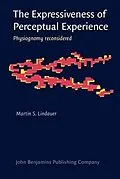A face strikes us immediately as sad, and so, too, do a mourner, a willow tree, a house on a prairie, and a group of onlookers. The spontaneous emergence of affective and other qualities of people, things, places, and events falls under the heading of physiognomy, a phenomenon discussed since at least Aristotle, and a key feature of evolutionary theory, psychology, and perception as well as professional practice ("e;profiling"e;) and popular talk. However, physiognomy is a controversial topic because of a suspect history, and is often renamed as non-verbal communication.The Expressiveness of Perceptual Experience: Physiognomy Reconsidered examines this venerable, attractive, and contentious topic within the unique perspective of research-oriented psychology. Included are the processes involved, primarily perceptual; origins, mainly evolutionary; and social-cultural factors as supplements. Discussed within a holistic-experiential (phenomenological)-aesthetic framework are physiognomy's ties to the arts as well as emotions, synesthesia, learning, development, and personality. Empirical investigations are summarized, including the author's.
